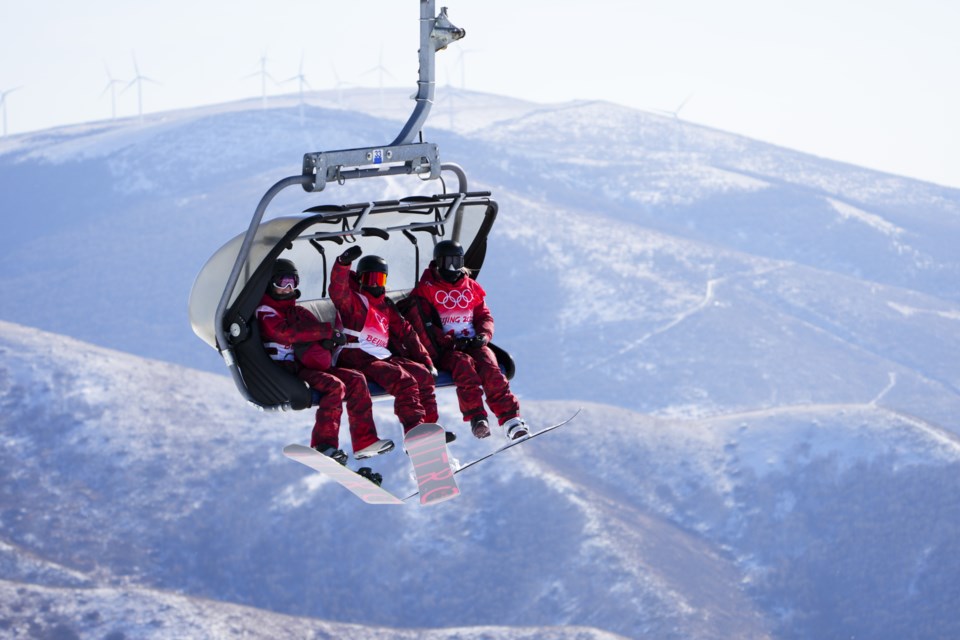ZHANGJIAKOU, China — Skiers and snowboarders often talk about carving up a slope. But in the mountain zone of the Beijing Olympics, the wind and snow are slicing back.
Zhangjiakou, a city 200 kilometres northwest of Beijing, is hosting freestyle skiing events, some snowboarding disciplines, and the Nordic sports at the 2022 Winter Games. Extreme cold and high winds have been a constant in the mountain hub, affecting the athletes' ability to compete at peak performance.
Daytime temperatures at Zhangjiakou Genting Snow Park, the mountain zone's main venue, have hovered around -15 Celsius before wind chill most days for the past week.
"It's a factor that makes it hard, the snow is firmer, your gear feels more stiff, your board, your boots, everything," said snowboarder Sebastien Toutant of L'Assomption, Que. "Once your toes are cold or your body's cold you don't feel like you're moving as good into the tricks you're doing.¬Ý
"You need your body to flow."
Both Toutant and snowboarding teammate Mark McMorris of Regina said that conditions were perfect on Monday as temperatures rose to -5 the morning they competed in the slopestyle final.¬Ý
But learning the slopestyle course before the Olympics and then competing in the qualifying round was difficult, as the frigid temperatures made their equipment feel more brittle.
"Happy it wasn't so cold today," said McMorris after winning slopestyle bronze. "My hardware was acting up yesterday (during qualifying). I'm a little sore."
McMorris kept goggles and a ski mask on throughout his outdoor interview to protect himself from the wind and cold.
Temperatures in Zhangjiakou plummet when the sun goes down, with the men's moguls final –°¿∂ ”∆µ held at -24 before factoring in wind. The women's final was slightly warmer at -20.
Moguls skiers wait in a small room kept at a relatively balmy 22 degrees before making their runs, but the quality of the snow is still impacted by the frigid conditions. Its iciness can make it tougher for athletes to make the precise movements that they are judged on.
"(The moguls are) definitely really sharp," said Sofiane Gagnon of Whistler, B.C., who crashed out of the women's moguls final. "That means that they're not very sloped, they're very flat and then a wall. I think that makes it a little bit harder."
Toutant agreed with Gagnon and explained that the metal edges on skis and snowboards stick to the snow more, changing the feel of the snow and making it tougher to manoeuvre. He added that crashes are tougher because the icy snow has less give than regular powder.
"When you crash, it's harder on the body," said Toutant, who had to cover his face when listening to reporters' questions. "I mean, the best conditions are when it's not too warm, not too cold, fresh groom that's firm but you can still dig you're your toe in the snow."
He said the high, unpredictable winds whipping through the mountains also provided a challenge for slopestyle and other sports that rely on airborne tricks.
"When (the wind is) consistent, like downhill, you can deal with it," said Toutant. "But when it's moving around, it's really tricky because sometimes you have a lot of speed, sometimes you have no speed.¬Ý
"It's one thing to do the tricks that we're doing out there but to do it in wind it makes the risk a little higher."
This report by The Canadian Press was first published Feb. 8, 2021.
John Chidley-Hill, The Canadian Press


